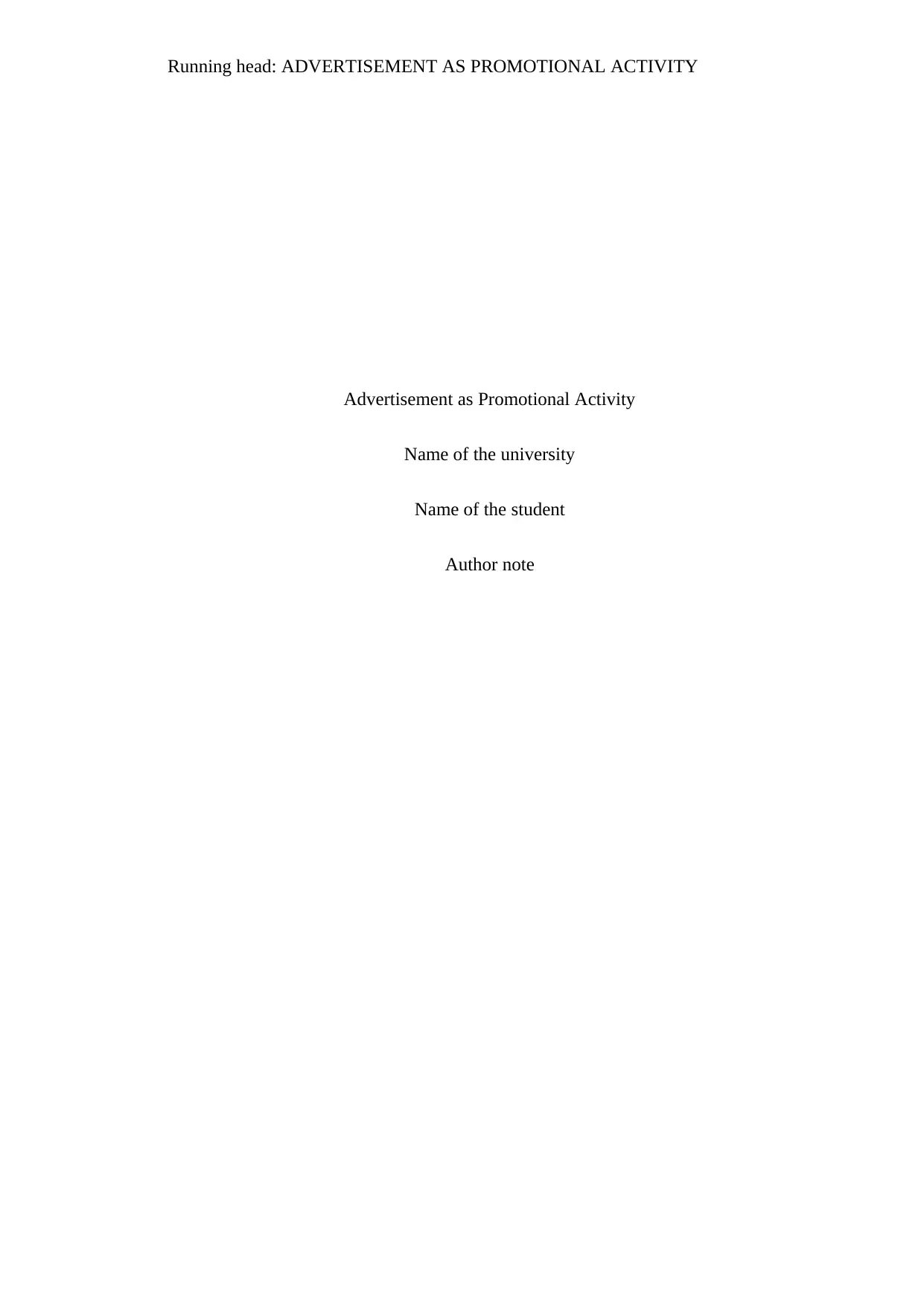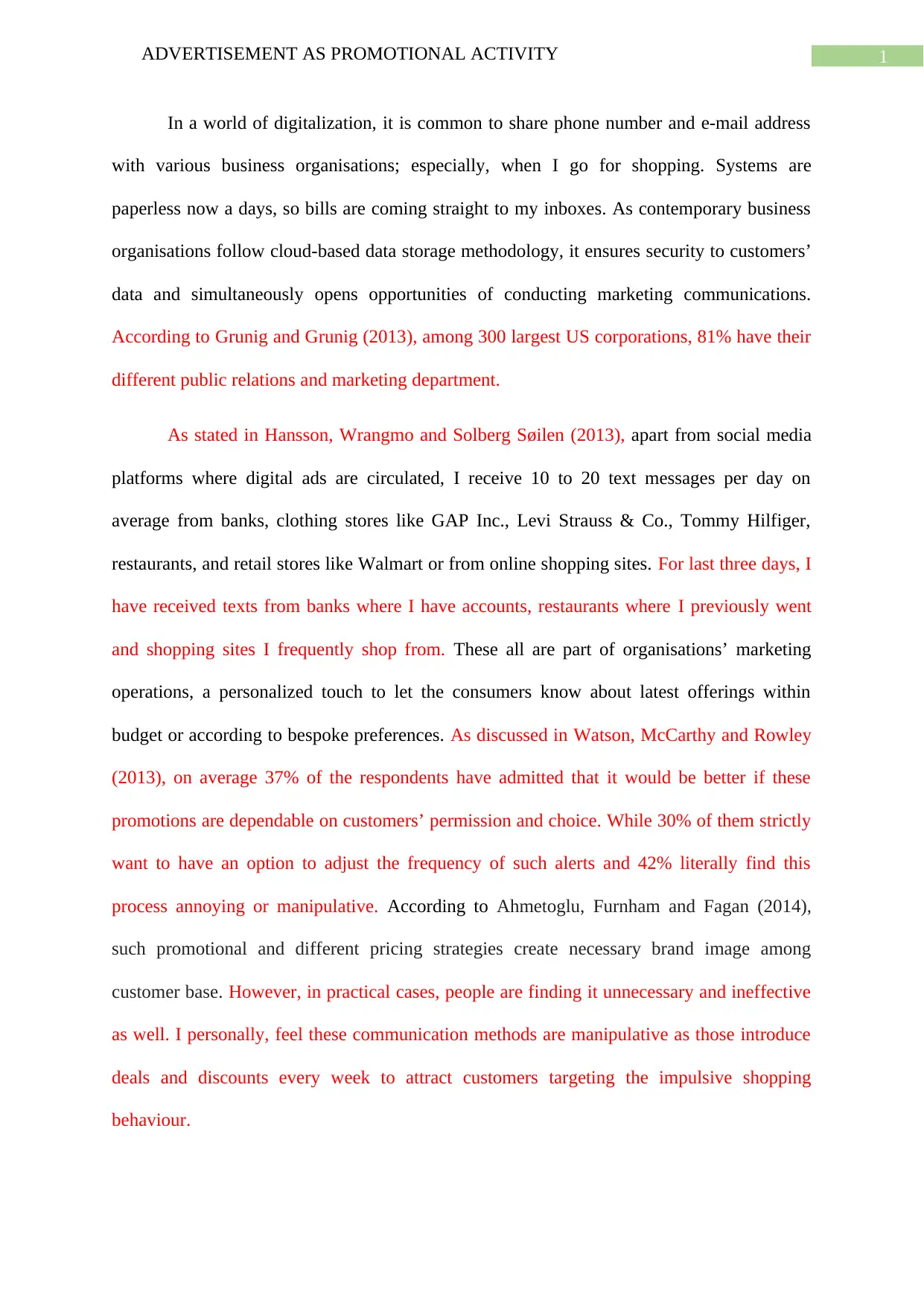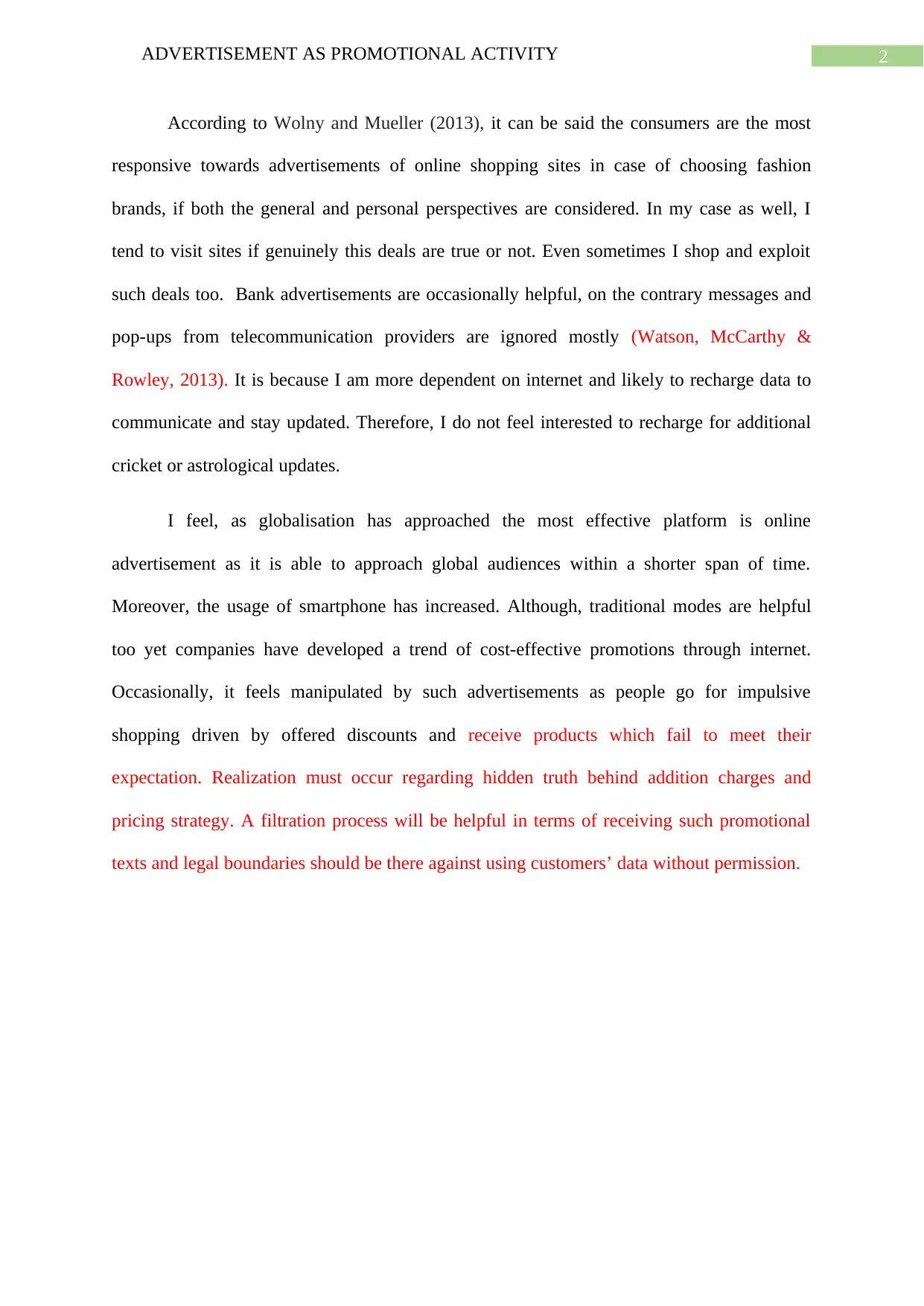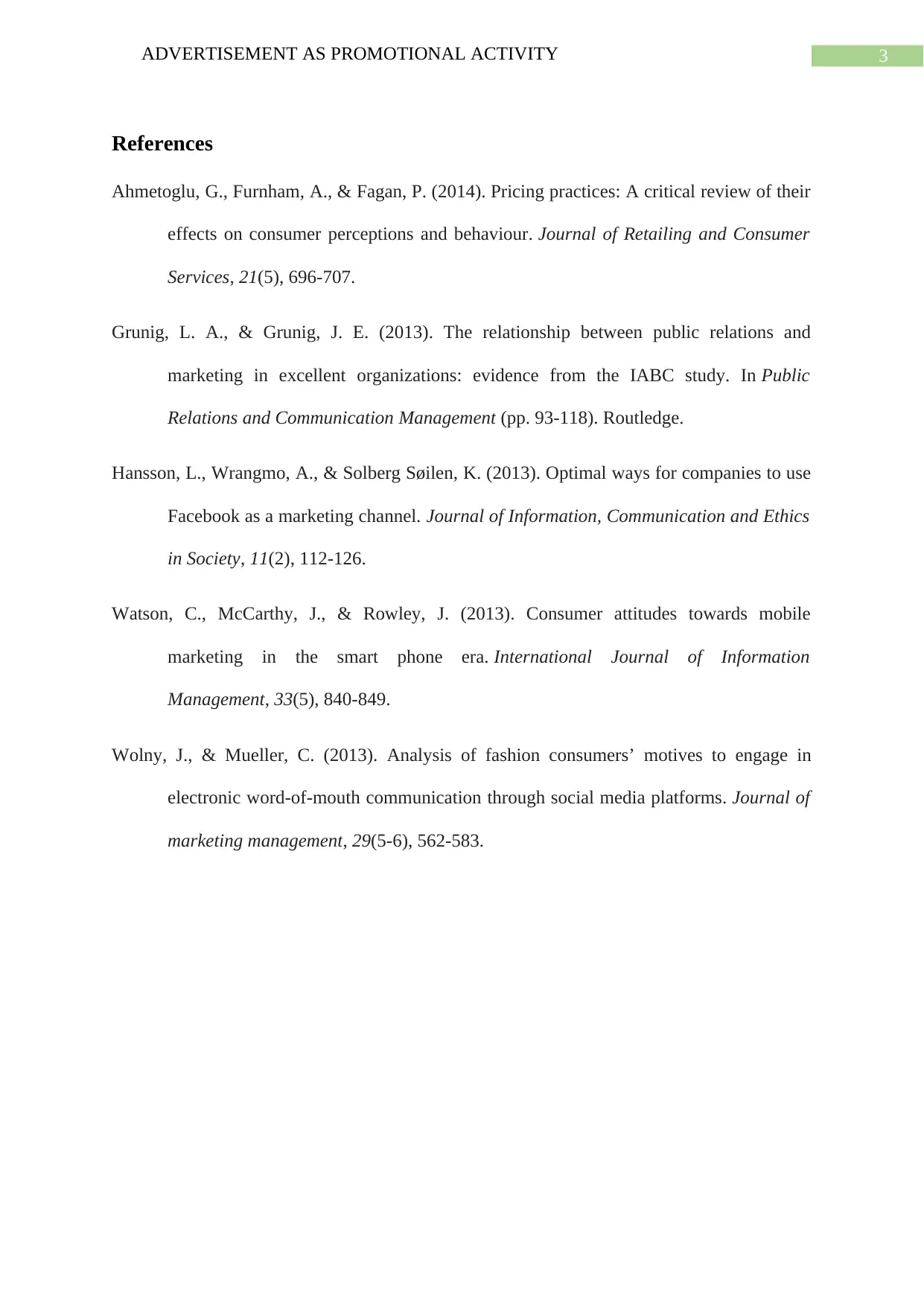Exploring Advertisement as Promotional Activity in the Digital Age
VerifiedAdded on 2023/04/23
|4
|870
|55
Essay
AI Summary
This essay explores the role of advertisement as a promotional activity in the context of increasing digitalization and cloud-based data storage. It discusses the prevalence of digital ads and personalized text messages from various businesses, highlighting both the benefits and drawbacks of these marketing communications. The essay references studies on consumer attitudes towards mobile marketing, noting that while some appreciate the personalized touch, many find it annoying or manipulative. It also touches on the effectiveness of online advertisements, particularly for fashion brands, and the potential for impulsive shopping driven by discounts. The essay concludes by advocating for a filtration process for promotional texts and legal boundaries to protect customer data, emphasizing the need for transparency and ethical considerations in advertising practices. Desklib provides access to similar essays and study resources for students.
1 out of 4








![[object Object]](/_next/static/media/star-bottom.7253800d.svg)